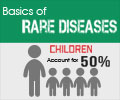AI tool TxGNN identifies existing drugs as potential treatments for over 17,000 rare diseases, promising faster, cost-effective solutions.

- TxGNN can propose drug candidates for 17,000 diseases, many without current treatments
- It outperforms existing AI models, being 50% more effective in drug candidate identification
- The tool aims to reduce health disparities in rare disease treatment access
Using AI to repurpose existing drugs for treatment of rare diseases
Go to source).
Only 5-7% of rare diseases have FDA-approved treatments. #medindia #rarediseases #aiinhealth’
Role of AI in Drug Repurposing
Introduction of TxGNN
Researchers at Harvard Medical School have developed an innovative AI tool named TxGNN, specifically designed to identify potential drug candidates for rare diseases and conditions lacking treatments. This groundbreaking model has the capacity to analyze existing medicines and propose new therapies for over 17,000 diseases, marking a significant advancement in the field of drug repurposing.
Mechanisms of Action
TxGNN operates by utilizing extensive datasets, including DNA sequences, gene activity levels, and clinical notes, to draw connections between diseases. This ability allows it to identify shared genomic features and disease mechanisms, providing insights that can lead to novel therapeutic applications for established drugs.
Advantages of Drug Repurposing
Safety and Efficacy: Repurposing existing drugs offers a host of advantages. Since these medications have undergone rigorous testing and regulatory scrutiny, their safety profiles are well-understood. Furthermore, many FDA-approved drugs have additional, previously unknown therapeutic effects that can be harnessed for treating other conditions.Cost-Effectiveness: Developing new drugs is an arduous and costly process. In contrast, repurposing existing drugs can be significantly faster and more economical. The AI model aims to streamline this process by providing actionable insights into existing treatments.
Addressing Health Disparities: As highlighted by lead researcher Marinka Zitnik, TxGNN seeks to bridge the gap in treatment availability for rare and neglected conditions. By identifying new uses for existing drugs, the tool can help mitigate the health disparities that many patients face.
Performance of TxGNN
TxGNN outperforms existing AI models in several key areas. It is approximately 50 percent more effective at identifying drug candidates and 35 percent more accurate in predicting contraindications compared to leading models in drug repurposing. This enhanced performance underscores the tool’s potential impact on drug discovery.Features of TxGNN
The AI tool includes two primary functionalities:
- Drug Candidate Identification: It identifies potential treatment candidates from nearly 8,000 existing medicines, including both approved and experimental drugs.
- Rationale Explanation: TxGNN provides an explanation for its recommendations, enhancing transparency and allowing healthcare professionals to understand the reasoning behind suggested therapies.
The development of TxGNN represents a significant leap forward in the quest to provide effective treatments for rare and neglected diseases. By harnessing the power of AI to repurpose existing drugs, researchers aim to alleviate the burden of these conditions on patients worldwide. This innovative approach not only offers hope for new therapies but also demonstrates the potential of technology to transform healthcare delivery and outcomes for underserved populations.
Reference:
- Using AI to repurpose existing drugs for treatment of rare diseases - (https://news.harvard.edu/gazette/story/2024/09/using-ai-to-repurpose-existing-drugs-for-treatment-of-rare-diseases/)
Source-Medindia











